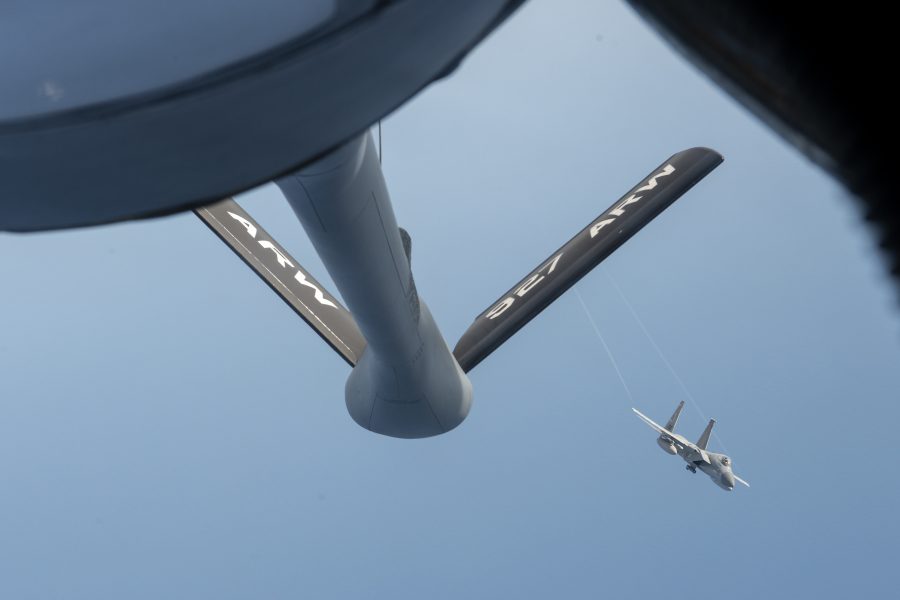As the SpaceX Crew Dragon rocketed into orbit carrying American astronauts on May 30, a team of USAF aircraft circled the airspace to ensure it was safe and rescue crews stood alert in case the mission did not go safely.
“We all recognized the historical significance of the mission,” said Capt. Nathan Foltz, an instructor pilot with the 50th Air Refueling Squadron who flew a KC-135 in support of the launch. “We were all pretty excited about the opportunity to participate.”
The KC-135 from MacDill Air Force Base, Fla., refueled F-15s from the Guard’s 125th Fighter Wing for the launch. The tanker and fighters patrolled the airspace for the original launch date on May 27, which was scrubbed due to poor weather, and returned for the successful launch three days later.
The KC-135, call sign NATION02, orbited off the coast of Florida for about four hours on May 30, topping off the F-15s to ensure the airspace was clear.
For Foltz, who studied astronautical engineering before flying in the Air Force, the mission had personal investment. A storm cell blocked the crew’s view of the launch, but the pilots had a radio frequency set up to listen in on the SpaceX and NASA broadcast.
“A mission of this significance and priority doesn’t come along too often,” Foltz said, adding “it is a major, major event. It’s one mission you’ll want to tell your grandkids about.”
At the same time, Airmen with the 45th Operations Group-Detachment 3 stood alert in an operations center at Patrick Air Force Base, Fla.; along with Airmen and aircraft standing by at Joint Base Charleston, S.C.; and Joint Base Pearl Harbor-Hickam, Hawaii. The detachment’s pararescuemen, combat rescue officers, aircrew flight equipment specialists, and HH-60 Pave Hawks, HC-130Js, and C-17s were ready if the astronauts needed to be rescued.
The Airmen could launch immediately, and airdrop into the open ocean with equipment—such as jet skies and scuba gear—to extract the astronauts from the Dragon capsule in the sea. For this mission, the crew stayed on alert until the Dragon docked with the International Space Station the next day.
The team spent the “past couple years” developing new tactics, including working on a specially made Dragon capsule, to ensure they were ready if the astronauts needed help, said Maj. Marcus Maris, the rescue division chief with the detachment.
The detachment has a long history of supporting launches, dating back to Project Mercury in 1959. For this mission, the detachment worked through NASA to coordinate with a private company, and had to train and operate amid the COVID-19 pandemic, Maris said.
“The [detachment] is very passionate in supporting the mission,” he said. “We’re all excited to see the U.S. return to the International Space Station and low-Earth orbit from U.S. soil. Personally, it shows there’s been a lot of hard work. The whole endeavor personifies the American ‘can do’ attitude. … It, to me, represents what this country has always stood for and been about.”
